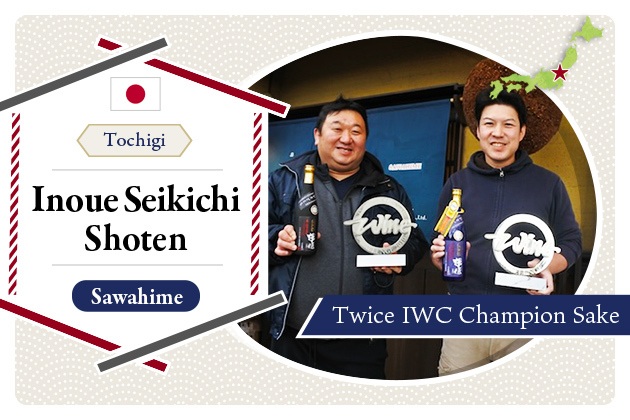
2024.06
26
What is Non-foaming Yeast? Learn the Difference from General Sake Yeasts
Did you know that there are two main types of sake yeast used in sake brewing: foaming yeast and non-foaming yeast?
Original yeasts that were used in the sake making process produced a fermentation with foam, but over time, brewers began to see a need for a non-foaming, and this new type of yeast was developed in response to the needs of the sake brewing industry.
Here we explain the background and history of the development of non-foaming yeast, as well as the characteristics and how it differs from general sake yeast.
The high foam formation of sake yeast and its problems
Sake yeast originally has the characteristic of high foam formation. This is a characteristic in which the yeast attaches itself to the carbon dioxide bubbles generated during the alcoholic fermentation process, and as the fermentation proceeds, the moromi mash constantly generates foam, and can take up much of the space remaining in the tank.
The foam produced by yeast has been used as an indicator to determine the condition of the moromi mash, since its appearance changes depending on the progress of fermentation.
On the other hand, form has also been a source of concern for brewers. When high foam builds up, the volume of the moromi increases and it can overflow from the tank. Not only is the area around the tank dirty and unsanitary when the moromi overflows, but it also reduces the amount of yeast in the moromi by causing leakage of the yeast that is abundant in the foam. This prevents subsequent fermentation from progressing properly.
In order to prevent overflowing, the amount of moromi must be kept moderate in relation to the size of the tank. Specifically, only about half to two-thirds of the tank capacity can be used, which inevitably leads to waste in terms of cost. To avoid overflowing the tank when foam is generated, a tool called awa gasa (foam shade), attached to the top of the tank, is sometimes utilized.
Even if the tanks are kept with plenty of room to spare, if left unattended, the moromi will continue to foam and can risk overflow. This is where the foam-extinguishing process comes in. Historically, foam was removed by hand throughout the night. Nowadays, the process is often mechanized using tools such as a mixer with a motor, but it is necessary to manage the equipment so that it can be used for various types of moromi at the right time and the stage of the fermentation.
In an effort to solve these problems, research has led to the development of yeasts that do not foam during fermentation. Foamless yeast is often developed as a mutant strain of a superior foamy yeast and is named by adding "01" after the number of the original yeast name, such as 701 for a non-foaming mutant strain of No. 7 yeast, 901 for a non-foaming mutant strain of No. 9 yeast, and so on.
History of the discovery and development of non-foaming yeast
Let's look at the history of the discovery and widespread use of non-foaming yeast.
The first foamless yeast was discovered in 1916, when Genjiro Takahashi of the Hiroshima Taxation Bureau and Naozo Zenda of the Brewery Research Institute of the Ministry of Finance isolated the non-foaming yeast. Before that time, it had been known that there were cases where the mash either produced high foam or did not, but both Takahashi and Zenda had clarified that this was determined by the nature of the yeast.
Historically, high foaming fermentations were not a problem because brewers worked in small batches and had adequate labor to give the fermenting mash constant attention. There was a tendency for non-foaming to be regarded as an abnormal phenomenon, and the foamless yeast isolated by Takahashi and Zenda was lost without being widely used in the industry.
Nearly 50 years later, in 1963, research on foamless yeast began again. The trigger was an accidental occurrence of a series of foamless phenomena at a sake brewery in Shimane Prefecture. Yuichi Akiyama of the National Brewery Research Institute of the National Tax Agency learned of this and isolated the non-foaming yeast A-63 from the moromi that caused the foamless phenomenon.
During the course of research on A-63 yeast, the properties of non-foaming yeast were gradually revealed. Based on the results of this research, we developed a foamless mutant strain of Kyokai No. 7 yeast, No. 701, in 1971.
Since then, excellent foamless yeast strains have been developed one after another, which are superior to the foamy yeast strains in terms of aroma and taste of the finished sake. Today, foam-free versions of each Kyokai yeast are distributed, and other yeasts developed in recent years, such as yeast No. 1601 and later and No. 28 yeast, are foam-free only.
Non-foaming yeast has been well received by the sake brewers, with data showing that as of 2015, approximately 83% of the yeast distributed was foam-free type.
*Reference: Sake and Microorganisms, Kazuo Sato, Modern media 61-9, 2015 (in Japanese)
The development of molecular genetics has also led to the identification of a gene (AWA1) that governs the formation of high foam in moromi mash. It is now also clear as to the cause of high foams during fermentation.
Properties of non-foaming yeast - difference in fermentation progress and taste
When comparing the non-foaming yeasts to the yeast from which it was isolated, some differences can be seen in terms of the brewing process and other factors.
The biggest difference is that the foamy yeast adheres to the carbon dioxide bubbles, whereas the foamless yeast does not. This difference determines whether or not high foam is formed. High foam is created because the yeast's attachment stabilizes the bubbles. Since non-foaming yeast does not adhere to the carbon dioxide bubbles, the bubbles in the malt will collapse quickly and high foam will not form.
In addition, in moromi mash with foamy yeast, more yeast is present in the foam. As a result, the yeast density of the entire mash drops during high foam formation. On the other hand, with non-foaming yeast, high foam does not form and the yeast density in the mash can be maintained, resulting in a higher fermentation rate than with foam yeast.
Overall, however, foam-free yeast has similar characteristics to the parent strain from which it was isolated. The fact that the characteristics of the resulting sake remain largely the same is probably the reason why foamless yeast has become so widespread.
Nevertheless, some breweries insist on using yeasts that produce foam and they do this for various reasons. Some brewers use special tools to effectively control the foam, some feel foaming yeasts have an impact on taste and quality, and other brewers use foam as a way to receive feedback on the progression of the fermentation. Overall, yeast is an important element that determines the taste of sake and each brewery chooses the best yeast for its sake.
References
- Non-foaming yeast | Sake Glossary by the Society of Nada Sake Research
- Kozo Ouchi, History of Non-foaming Yeast, Journal of the Brewing Society of Japan 105-4, 2010
- Kazuo Sato, Sake and Microorganisms, Modern Media 61-9, 2015
- Hitoshi Shimoi, AWA1: Genes involved in high foam formation in sake yeast, Journal of the Brewing Society of Japan 97-7, 2002
Pickup Articles
2019.01.18
2019.01.25
Trending Articles
Popular Articles
Recent Articles













